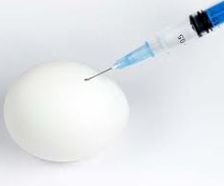Tough times for egg producers in UK

To stabilise the egg market, the number of laying hens across the EU needs to decline by around 20–40 million laying hens but egg prices are unlikely to increase until Easter 2012. This is the view of Klaus Torborg, of Lohmann Animal Health, speaking at a dinner for UK egg producers in Shropshire.
He said that many producers would go out of business because they did not have the money to reinvest in new systems after the ban on conventional cages on 1st January 2012.
However, reports from the field suggested that the final transition from cages to alternative systems would take two years. He did not expect producers to be penalised in the first half of 2012, due to the authorities concentrating on dealing with the financial crisis.
Enriched Cages
Torborg warned British producers of the consequences of political decisions. Germany banned convention cages two years earlier than other EU countries. Many poultry farmers then invested in colony systems (enriched cages), but due to pressure from welfare groups, major buyers such as Lidl and Aldi would not accept eggs from these systems. As a result German producers had to switch to barn systems which caused high financial losses. Producers who stuck with enriched cages now have to sell their eggs for processing. It is predicted that in Germany a total colony ban will come into place by 2020.
In the meantime, Germany suffers huge imports from the Netherlands and Poland. Currently it costs in Germany 8.3 to 8.6 cents to produce each egg in barn system, but the discounting stores are buying them at 7.8 cents (delivered free to a central depot), leaving a negative margin of more than 0.5 cents.
Free range producers
However, free range producers — who only account for a small proportion of German production — are making a small margin of 0.5 cents per egg. This is in stark contrast to the UK – where free range is predicted to account for 50% of the market — and producers are making a loss.
“Ironically, the only sector making money in the UK is now the enriched cage sector,” said Torborg. He pointed out that BEIC (British Egg Industry Council) suggests that 23% of the EU’s 363 million commercial layers were likely to be non-compliant with the cage ban by 1st January 2012 but it remained to be seen whether EU member states would enforce the ban at that time.
Source: Lohmann













